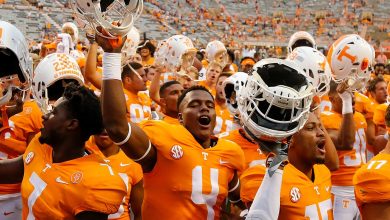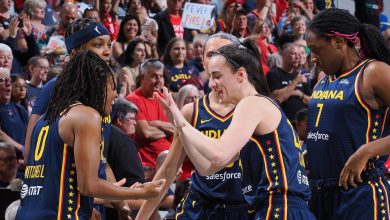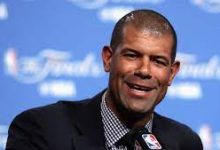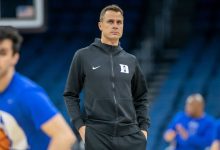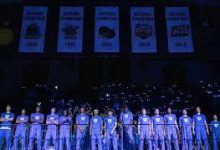A Deep Dive into the Duke basketball New Squad.
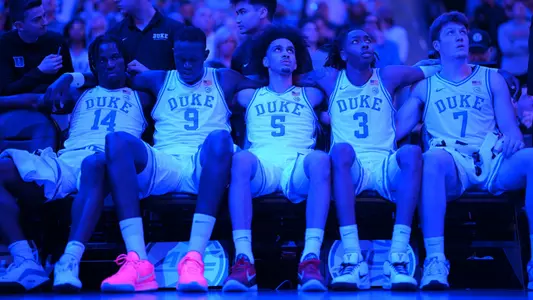
Duke experienced a major departure of talent from its 2024–25 squad—Cooper Flagg, Kon Knueppel, Khaman Maluach, Tyrese Proctor, Jared McCain, Kyle Filipowski and others all left via the NBA Draft or transfers . The result is a roster in flux, but also one brimming with promise, both from within and through a new wave of high-leverage talent. Scheyer didn’t chase headline-grabbing transfers this offseason. Instead, he opted to retain a core group—Caleb Foster, Maliq Brown, Darren Harris, Pat Ngongba, Isaiah Evans—while infusing the roster with elite freshmen like Cameron and Cayden Boozer, Nikolas Khamenia, and bringing in Washington State transfer Cedric Coward . The strategy is clear: continuity and development, not quick fixes.
On that note, retention was key. Foster, Evans, Brown, Harris, and Ngongba were all offered chances elsewhere, yet pulled by Scheyer’s development pitch. Foster returns to solidify the backcourt after his sophomore slump; Evans, the sharpshooter, withdrew from the NBA Draft to come back; Brown and Harris add seasoned versatility; Ngongba, despite injury worries, represents Duke’s lone true in-house center and is expected to expand his role .
Among this returning group, Foster’s growth feels pivotal. In 2024–25 he averaged around 5 points per game as a bench guard. Now, with an outside shot and defensive skills, he’ll be expected to anchor point guard duties, with added freedom to showcase scoring potential . Evans remains the skeleton key of Duke’s spacing game. As a freshman he launched 81 percent of his shots from three and led Duke at roughly 42 percent from deep. With consistent minutes and growth in all-around offense and defense, his junior season could be a breakout effort .
Brown, a Syracuse transfer, is prized for his energy, athleticism, rebounding, and defense. A member of the ACC All-Defensive team at Syracuse, he brings interior toughness and hustle, a physical contrast to Duke’s perimeter finesse . Harris and Ngongba round out the group; Harris as a knockdown freshman wing and floor stretcher, Ngongba as the only true returning center—both developing within Scheyer’s system . Note that Ngongba battled foot injuries but has ramped up through summer workouts, dealing with minor setbacks but benefiting from Duke’s top-tier medical support .
Then there’s the fresh blood. The Boozer twins represent one of the most potent recruit duos in recent memory—Cameron, a top‑3 national power forward (22 ppg, 11 rpg in high school), paired with Cayden, a crafty four-star point guard and floor general—all sons of Duke legend Carlos Boozer . Cameron arrives as a potential foundational piece: 6’9″ with innate two-way versatility, polished scoring, and playmaking even at age 17 . Cayden provides complementary guard strength and decision-making alongside Foster and Evans.
Nikolas Khamenia, a 6’8″ five-star wing with elite passing and shooting, headlines international recruits, has already earned a U‑19 Team USA roster spot, and is poised to add length and creativity . His arrival boosts Duke’s perimeter talent and ball movement in ways that could redefine its offense. Cedric Coward, another significant addition, arrives from Washington State’s portal with huge potential—averaging nearly 18 ppg, 7 rpg, 3.7 apg in just six games before injury. His status is fluid; he might test the NBA waters again, but if he returns, he slots into a backcourt rich with experience and flight risk .
This blend of returning veterans, rising sophomores, and blue-chip freshmen creates a roster as deep, tall, and versatile as anything Duke has assembled recently. Consider the wings: Evans, Harris, Khamenia, Coward, and Sion James (a graduate transfer from Tulane). James provides scoring, size, and stability from the 3/2 position, though his upside leans more toward perimeter role-playing .
The frontcourt appears built around Cameron Boozer and Pat Ngongba, with Maliq Brown backing both up. Brown’s defense was instrumental at Syracuse, while Ngongba, once healthy, offers rim protection and mobility, a rare 6’11″ two-way center for Duke . That leaves a multi-player rotation in the paint mixing established toughness with the bump-up productivity of newcomers.
Coach Scheyer is orchestrating this roster amid a college landscape where others went all-in on explosive portal talent or one-and-done super freshmen. Instead, Duke’s philosophy appears grounded in cultivating long-term chemistry and skill development, with only the Boozer twins and Khamenia representing generational freshman talent—and a portal addition in Coward. That intentional-building mindset speaks to Scheyer’s belief in the internal core’s capacity to grow into star roles .
Fan sentiment reflects excitement. A Reddit thread praised the “deepest Duke team I can remember,” highlighting bench pieces like Ngongba, Harris, and Brown as nightmare defenders for opponents . On Tools like Size, Length, and Versatility, the roster checks multiple boxes. Seasoned defenders, skilled slashers and shooters, rim protectors and playmakers—all coexist in a single roster.
Of course, there are open questions: Ngongba’s injury history, how Foster will adapt in a lead-role backcourt, whether freshman-heavy schemes will gel under game pressure, and Coward’s draft intentions loom. And while the backcourt rotation is strong, guard depth beyond the core may be tested late in ACC play. The team must also glue together experience and youth—for national success, continuity isn’t enough without chemistry and cohesion.
Scheyer’s schedule reflects his ambitions. Non-conference games against top teams like Texas, Michigan State, and Michigan—plus ACC matchups versus perennial foe UNC—will serve as early measuring sticks . By the time conference play hits, Duke will need to have found its identity and rotation.
Summing up, Duke has assembled a unique roster balance: returning role-playing veterans boosted by two all‑world freshmen, a five-star wing, and selective veteran transfers. It’s a model of scalability: ready to compete immediately but built for next season and beyond. If Pat Ngongba stays healthy; if Foster evolves into a floor general; if Evans, James, Harris, Khamenia, and the Boozers flourish together; then Duke could be one of the nation’s deepest, most multifaceted contenders in 2025–26.
However, that potential only converts if cohesion arrives early, the backcourt’s offensive creation emerges, and the interior defense—via Brown and Ngongba—gets consistency. Scheyer’s blueprint values process, development, and collective strength over one superstar. On paper, this team is as versatile and promising as any Duke group in recent memory. Now the only question is whether it can harmonize on the court when the whistle blows




